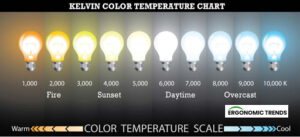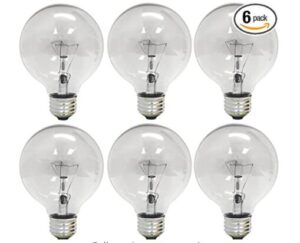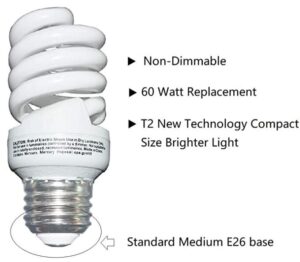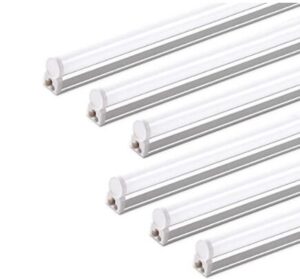Sufficient lighting is a priority across all working spaces, thanks to how much it improves productivity. From minimal glare to appropriate color temperature, ergonomic lighting is worth embracing in your room.
Understandably, this concept is relatively new, and not everyone has mastered its elements. Thankfully, here, we have a few insights into ergonomic lighting for office.

Ergonomic Lighting for Workstation and CVS (Computer Vision Syndrome)
Ergonomics has become a priority in the modern workplace. It is crucial not only for wellness but also for preventing computer vision syndrome. This condition affects over 90% of employees, and its symptoms include headaches, blurred vision, and dry eyes.
Unless you address improper lighting, whether too little or too much, digital eye strain will always be there. That means productivity will be compromised. For that reason, ensure that you invest in the right lighting.
Ergonomic lighting allows you to avoid various issues at work. Such will be the right time to go for dual-source lighting, meaning you can use adjustable task lighting and overhead lighting. Task lights provide optimal lighting, cushioning you against eye strain. On the other hand, overhead lighting provides the primary light.
An Overview of Ergonomic Lighting in the Office

Ergonomic lighting in the office depends on three issues, including color temperature, placement, and intensity.
Placement
Placement involves putting the light in the right places. Reflected light on your computers could cause eye strain, thanks to the glare provided. Ensure that you place your lighting in a way that does not reflect on the computers. Instead, these lights must provide enough light without shining in your eyes.
Intensity
The light intensity and contrast matter too. Dim light causes squinting, while bright light results in straining. Striking a perfect balance helps avoid various issues in the long run.
Color temperature
You cannot overlook the significance of color temperature in enhancing ergonomic lighting. This color temperature often ranges between 2400K and 5000K. Usually, blue screens interfere with your circadian system, causing poor sleep patterns. Yellow light is much friendlier to the eyes, and it provides the best task lighting.
Basic Types of Lighting in the Office

Understanding the types of lighting at your disposal can help you make logical decisions. Usually, you will have to choose from three options—local, general-local, and localized lighting. Here are a few insights into each of them.
General
This light emanates from lamps. Its sources include incandescent, fluorescent, and LEDs. Whether it is ambient, task, or accent lighting, the source is usually a lamp. Its color temperature is relatively akin to natural daylight.
Localized General
This light uses various overhead fixtures. These fixtures work hand in hand with other ceiling fixtures to provide more light. The light is adjustable, allowing you to personalize the kind of light you need.
Local or task
This light is designed to increase the light levels according to the immediate environment. It provides you with unrivaled flexibility, thanks to how it allows you to adjust it. You can rely on it to handle various small tasks, including reading.
Types of Light Fixtures

Did you know that you have multiple types of light fixtures at your disposal? This variety helps ensure that you personalize your space seamlessly, whether in the office or at home. You could choose direct, direct-indirect, indirect, or shielded light fixtures. Here is what you should know about each of them.
Direct Light Fixtures
These light fixtures usually project at least 90% of their light downward and directly toward the work area. This illumination aims at specific subjects or places, acting as task lighting. For that reason, you can rely on it for daily tasks, including reading and studying. This light is suitable for providing light to subjects that require more focus.
In most cases, this light comes in handy in study rooms, offices, and the dining room. Bathroom vanities, countertops, and living rooms could also benefit from this type of fixture. Its role in the bedroom will often be limited. Regardless, ensure that you choose a reliable color temperature and intensity, let you end up eye-strained.
Indirect light fixtures could have a few disadvantages. Usually, they are likely to form shadows, making your surrounding less desirable. The light could be too much, and getting dimmers might be inevitable.
Indirect Lighting
This type of light fixture distributes light upwards, providing between 90 and 100% of this illumination. Its role in delivering ambiance is unrivaled, allowing you to navigate the room without too much hassle. You can also rely on it to accentuate your space, thanks to its reflective nature. That means the ceilings need to be not only clean and bright but also reflective.
This light comes in handy when you need sufficient illumination but without harsh light beams. That is because the goal is to add a little brightness to your space. Its light is soft, allowing you to relax or get into romantic moods. If you were to choose easily customizable lighting, you would never regret it.
There is no denying that this light provides the least of glare. However, for maximum efficiency, having a good ceiling will be a must. Besides, it could pose an esthetic issue if the roof is the brightest surface. That is because the room highlights the least contrast, making it a dull environment.
Direct-Indirect Lighting
Ideally, this option is a blend of indirect and direct fixtures. You can fit them with either upward or downward light distribution, depending on your preferences. You could also choose to get a combination of these two arrangements.
Its uplight component provides ambiance, while the downward element assures you of general illumination. The glow is usually soft, meaning that you do not have to strain your eyes. You could rely on these lights for both general illumination and task lighting.
Direct-indirect lighting often relies on the reflectance of the environment. The size, shape, and mounting style of your fixtures will always affect this reflection. Regardless, its light distribution is incredible, assuring you of a comfortable surrounding. However, these light fixtures have durability issues.
Shielded Lighting
This option relies on diffusers, louvers, and lenses. These tools help cover your bulbs from direct view, distributing light and protecting you against glare. While the diffusers are translucent, the lenses are transparent. The former helps control the brightness, while the latter enhances even light distribution. On the other hand, louvers control light and adjust brightness.
These light fixtures are ideal for spaces where protection is necessary. Proper angling will help maximize the light brightness, intensity, and distribution. However, this light is likely to expose you to significant glare in the long run.
Steps to Manage Ergonomic Lighting in the Office

You can barely overlook the urgency of having balanced light distribution in the office. However, unless you understand how to manage these lights, attaining productivity will remain a mirage. Thankfully, here are a few insights into how to do it.
Sufficient Lighting
Usually, balanced lighting will assure you of unrivaled comfort and productivity. Your goal is to ensure that there is sufficient lighting, not excess or too little.
Usually, dim lighting forces your eyes to double down on work, causing eye strain and migraines. On the other hand, excessive brightness might pose more challenges, thanks to the glare offered. Too much brightness causes squinting and eye strain also.
Remove shadows and dark spots
Take the time to address any shadows or dark spots in your room, mostly if you use direct lighting. These shadows result in significant illumination imbalance, exposing you to eye strain and headaches. Addressing this problem requires you to use indirect and direct lighting. If you were to embrace the direct-indirect light fixtures, you would barely need to worry about dark spots or shadows.
Take care of glare
Whether it is direct or indirect glare, the effect on your eyes will always be immense. Ideally, it makes it hard to discern anything. Take the time to find a solution to this glare, and timely so.
First, ensure that your ceilings are not way too glossy if you use indirect light. It will ensure that the illumination in the room remains balanced at all times.
Further, ensure that you put your workspace away from your workspace, including natural light through the window.
Enough contrast matters a lot
Improper contrast is likely to put some weight on your eyes. Usually, you need to ensure that both the color and the lighting contrast are astounding. For instance, low color contrast makes it harder to distinguish between the foreground and the background.
On the other hand, poor lighting contrast makes it hard to see things like what is on your phone. Ensure that you strike a balance at all times.
Calibrate the color temperature
This move helps accentuate your mood and even whatever you do. Its role in mitigating different health issues is astounding. Usually, it would be best to opt for a color temperature with a relatively low number of Kelvins. That is because it provides enough brightness yet comfortable. You will also be sure of a vibrant environment and unrivaled productivity. Did you know that blue light compromises your productivity?
Tips for Ergonomic Lighting for Office

Take the time to understand how to handle your lighting. Usually, observing the following variables will come in handy for you.
Do not go too dim or way too bright
There is no denying that too much brightness can readily strain your eyes. Things do not become better if you were to choose too dim a light. Instead, work on ensuring that there is a perfect balance and that light sufficiency becomes a priority.
For instance, using both direct and indirect lighting will help attain a relatively soft glow that illuminates and provides enough ambiance to the room. Without a balance, health issues will most likely be the order of the day.
Choose soft, yellow light
Studies indicate that yellow light provides a relatively low number of Kelvins. This subtle color temperature comes in handy in improving your productivity. As long as you want reliable task lighting, the yellow light will ensure that you do not suffer too many shadows and dark spots, making your task easy. You will also not have to worry about eye strain.
Know where to place your light
There is no denying that placing your light in the right place will help attain the light ergonomics you envision. Usually, it would be best to have your workspace away from direct lighting. You could consider placing it around 90 degrees from the source.
The workspace should be in a place where there is no too much brightness or dimness. Instead, sufficiency should rule.
Monitors and Windows
Did you know that where you place your monitor will always determine how much reflection reaches your eyes? If your monitor is placed directly in front of a window, you will likely end up with too much reflection on it, causing eye strain. Take the time to put the monitor in an indirect path to the light produced by the window.
Keep adjusting the light
Light needs vary with the time of the day. For instance, you do not need too much light at noon, as there is sufficient natural light. Such will be the time to switch off your internal or electric lighting. Ensure that you adjust the light lower as more and more natural light gets to your workspace.
Common Types of Lights
There are four common types of light, including incandescent, LED, CFL, and halogen. Here is what you should know about each of them.
Incandescent
This type of light relies on filament bulbs. These bulbs are relatively durable, and they are less expensive. They are ideal for small offices and at-home setups. However, they are becoming less popular by the day, thanks to the glare and the shadows they produce.

Halogen
These are ideally incandescent lights that come with a quartz-halogen or a quartz-iodine lamp. They have a tungsten filament that assures you of unrivaled brightness. They are big, and you will fall in love with their safety levels.

CFL
If you are looking for energy-saving light, this will be your ultimate choice. You will readily fall in love with their durability, efficiency, and energy-saving abilities.

LED
You can barely overlook the popularity of LED, thanks to its efficiency and durability. It is a semi-conductor that guarantees you a soft glow once the current flows through its diode.

Conclusion
In conclusion, ergonomic lighting is an inevitable adjustment every office should make. Its role in cushioning employees against health issues remains top-notch. As long as you understand how to set it up, you will have no reason to worry. Use the insights above!
